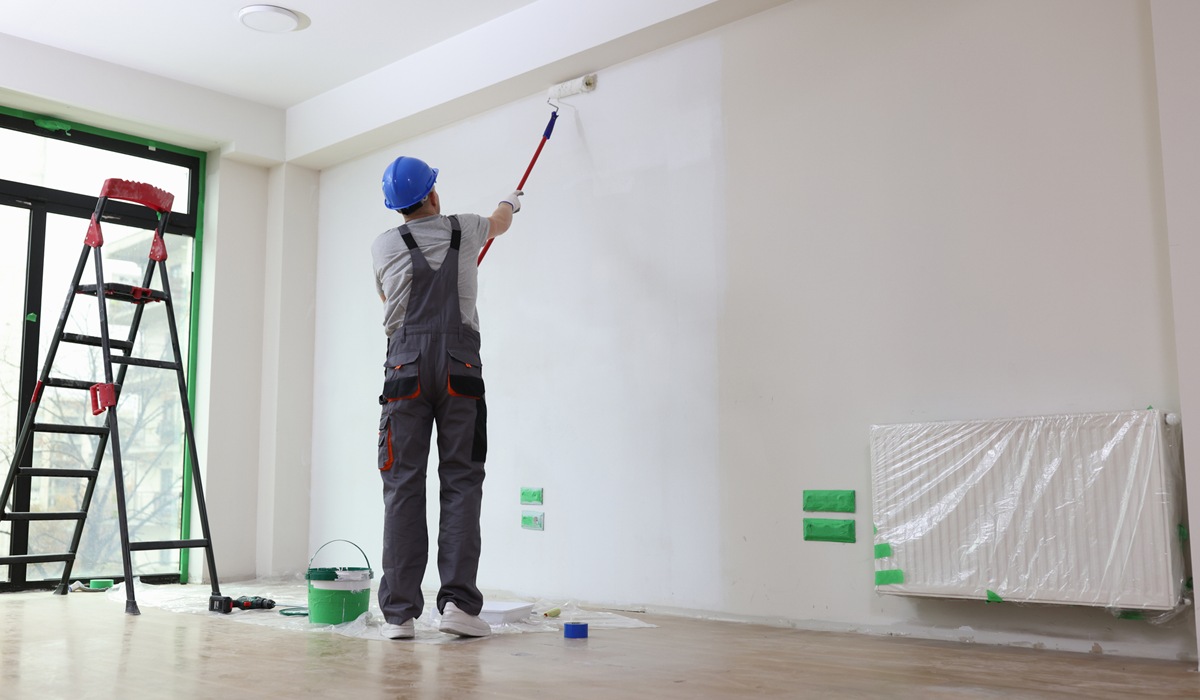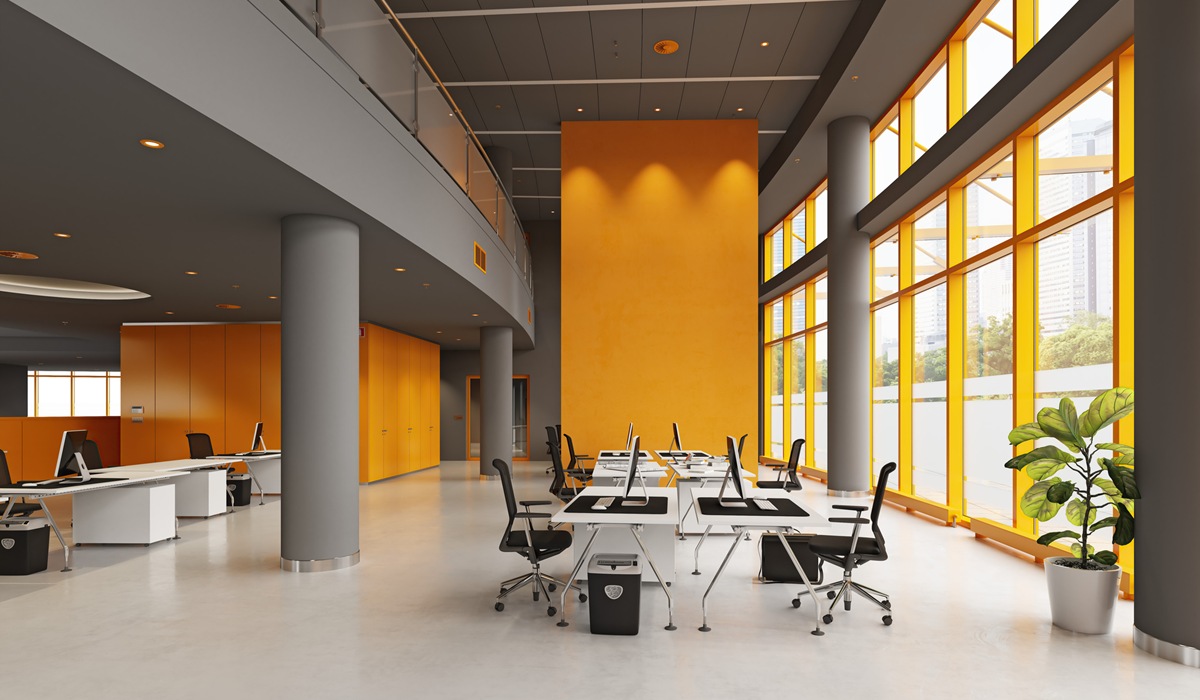If you’re planning a commercial interior painting project, you might be asking yourself a crucial question: Is it smart to schedule commercial painting during business hours? It’s a fair concern—and one that can affect your operations, your team, and even your bottom line.
Let’s dig into what you need to consider before you break out the paint.
Key Takeaways:
- Painting during business hours may save costs but can cause disruption.
- Off-hours painting reduces interruptions but may cost more.
- Safety, ventilation, and scheduling flexibility all play big roles.
- Communication with your painting contractor is key.

Why Business Owners Consider Painting During Working Hours
Let’s face it—shutting down operations for a paint job sounds inconvenient. Many business owners weigh whether painting during normal hours is possible to keep costs down and avoid after-hours charges.
Commercial painting during business hours can be a practical option if you plan well. But it depends on the type of business you run, the scope of the project, and how much disruption your team and customers can tolerate.
Pros of Painting During Business Hours
1. Lower Labor Costs
Painters who work during standard business hours typically charge less than those working nights or weekends. This is because after-hours jobs often come with premium rates to compensate for the inconvenience and added logistics. If you’re watching the budget on your commercial interior painting project, daytime scheduling can provide significant savings, especially for large or multi-room jobs. Every hour worked within a normal shift keeps your labor costs lean.
2. Easier Scheduling
Painting crews generally have more availability during regular hours, which can open up earlier project start dates and help avoid long wait times. This can be a major advantage if your facility is under a tight timeline or you’re trying to align the paint job with other renovations. A more flexible schedule also allows you to coordinate the project with your internal calendar to avoid peak periods.
3. Direct Oversight
Having the work done while your team is on-site allows for real-time oversight, which can be a game changer. You or your staff can monitor progress, confirm color selections on the spot, and make immediate adjustments as needed. If any concerns come up—like unexpected wall damage or paint sheen mismatch—they can be addressed right away without delays. This hands-on visibility can improve communication, reduce errors, and ensure the final result meets expectations.
Cons of Painting During Business Hours
1. Disruption to Staff and Customers
Let’s be real—paint fumes, ladders, and drop cloths don’t exactly create a calm workspace. The sound of sanding, scraping, or roller application can be distracting, especially in open-concept offices. If your business relies on a quiet or clean environment, such as a law firm, spa, or medical office, even minor disruptions can affect productivity and professionalism. Additionally, customers walking into a half-painted lobby may not have the best first impression.
2. Safety Hazards
Painting areas with active foot traffic introduces risks. Wet paint signs can only do so much to prevent slips or accidental contact with freshly painted walls. Tools, ladders, cords, and tarps create tripping hazards if the space isn’t carefully managed. In environments like retail or restaurants, where the public has easy access, these risks multiply. Proper containment, signage, and safety planning become essential.
3. Limited Access to Certain Spaces
You might have to temporarily close off offices, meeting rooms, or hallways, which can create logistical headaches. Employees may have to relocate temporarily or work around noisy conditions, leading to decreased morale and efficiency. For customer-facing areas, closures might mean redirecting visitors, limiting access to key services, or even altering your hours of operation. All of this can create friction in the customer experience and internal workflow.

When Painting During Business Hours Makes Sense
If you’re considering painting during the workday, it’s important to evaluate whether your business environment supports this choice. Certain characteristics make a space more adaptable to daytime painting projects. Here’s what to look for:
- Low Foot Traffic: Offices or spaces that don’t have frequent visitors or customers on-site. For example, back-office operations or storage facilities are typically more suitable since disruptions won’t affect client experiences.
- Sectioned Spaces: If your building can be painted in zones—one at a time—it’s easier to contain the work area, limit exposure to fumes, and maintain productivity in other sections.
- Well-Ventilated Areas: Good airflow helps disperse any paint fumes quickly, making it safer and more comfortable for staff to continue working nearby. Open windows, HVAC systems, and high ceilings are big pluses.
- Flexible Staff: Teams that can work remotely, shift work locations within the office, or adjust their hours slightly will be less impacted by on-site painting. This adaptability makes it much easier to work around the project timeline.
If your business checks most of these boxes, then daytime painting might work just fine.
Alternatives: After-Hours or Weekend Painting
If painting during business hours feels too disruptive, consider scheduling the work in the evenings or over the weekend. Yes, it may cost more. But it could save you from frustrating your employees or customers.
Some commercial painting companies even offer overnight services. This means you close up one day—and return the next to a freshly painted space, with no interruption.
How to Minimize Disruption If You Paint During Business Hours
If you’ve decided to move forward with daytime painting, the key to a smooth experience lies in how well you manage the logistics. Here are some practical steps that can help reduce inconvenience for your team and clients:
- Work in Sections: Paint one room or area at a time rather than tackling the entire building all at once. This approach limits exposure to fumes and noise and ensures business operations can continue in unaffected areas.
- Use Low-Odor Paint: Use paints labeled as low-VOC (volatile organic compounds) or zero-VOC. These products release fewer chemicals into the air, making it more pleasant for employees and customers who remain on-site during the project.
- Communicate Clearly: Inform your team, clients, and visitors about when and where painting will take place. Use signs, internal memos, or emails to keep everyone informed and set proper expectations. Surprises are rarely welcome during a workday.
- Schedule Around Downtime: Coordinate painting with times of reduced activity, such as lunch breaks, early mornings, or late afternoons. You can also time it around meetings when fewer employees are at their desks or customers are less likely to be present.
Choosing the Right Contractor
Your choice of painter matters—a lot. The right commercial painting partner will understand your need to balance appearance, productivity, and safety.
Ask them:
- Have you completed projects during business hours before?
- How do you protect staff and property during the job?
- Can you provide references from similar businesses?
A good contractor will help you map out the timing, minimize issues, and ensure a quality finish.
Final Thoughts
There’s no one-size-fits-all answer. Painting during business hours can work well for some businesses, and not at all for others. But with thoughtful planning, honest evaluation, and the right contractor, you can complete your commercial interior painting project with minimal stress.
If you’re unsure what’s best for your space, talk to a professional painter who can walk you through your options—and even customize a plan that works around your schedule.
Let’s Talk About Your Painting Project
Whether you’re leaning toward painting during business hours or after-hours, we can help make the process smooth and stress-free. At Highland Painting, we specialize in flexible, professional painting services designed for busy business owners. Call us today at 469-642-0972 to schedule your consultation and get expert guidance tailored to your needs.




